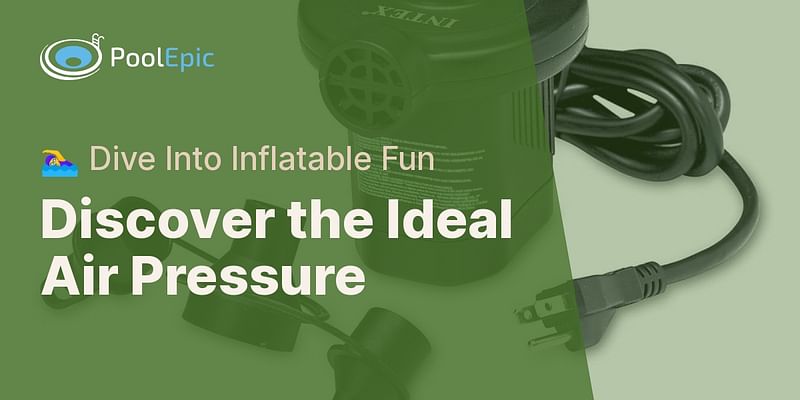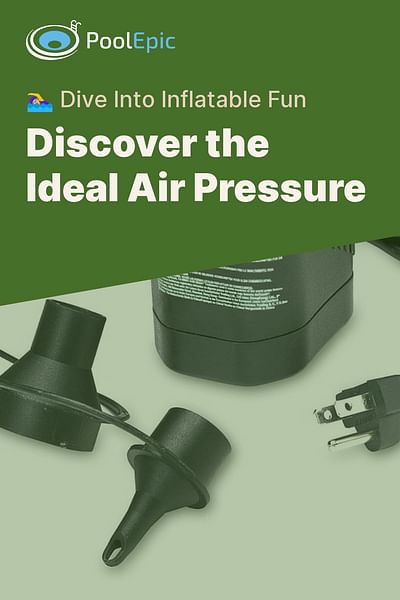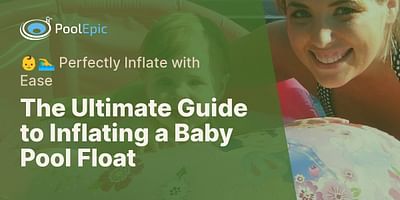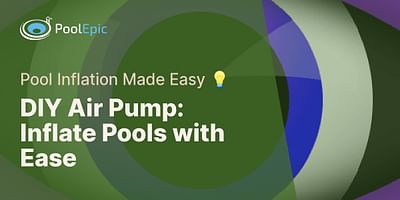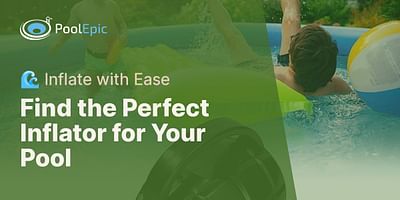An avid lover of the outdoors, Francesca Hodkiewicz has made a name for herself as an expert in water-based activities and products. Over the past ten years, she has immersed herself in the world of inflatable pools, exploring everything from compact kiddie pools to expansive family-sized options. Her practical experience, combined with her detailed research, positions her as a reliable resource for advice on inflatable pools.
Hey there! I'm Amanda, and I'm here to answer your burning question about inflatable pool toys. So, what is the typical air pressure in these fun-filled toys? Let's dive right in!
The air pressure in inflatable pool toys can vary depending on the specific toy and its design. However, as a general rule of thumb, most inflatable pool toys require an air pressure of around 0.02 to 0.03 PSI (pounds per square inch). Now, I know those numbers might not mean much to you, but don't worry, I'll break it down for you.
Inflatable Pool Toys and Their Required Air Pressure
| Pool Toy 🏖️ | Ideal PSI Range | Inflation Time (Approx.) | Inflation Method |
|---|---|---|---|
| Inflatable Ring 🟠 | 0.02 - 0.03 PSI | 2-3 minutes | Hand Pump/ Electric Pump |
| Inflatable Pool 🏊 | 0.02 - 0.03 PSI | 5-10 minutes | Electric Pump |
| Inflatable Slide 🎢 | 0.02 - 0.03 PSI | 5-7 minutes | Electric Pump |
| Inflatable Ball ⚽ | 0.02 - 0.03 PSI | 1-2 minutes | Hand Pump/ Electric Pump |
| Inflatable Raft 🚣 | 0.02 - 0.03 PSI | 3-5 minutes | Hand Pump/ Electric Pump |
To put it simply, the air pressure needed for inflatable pool toys is relatively low. It's important to keep the air pressure within the recommended range to ensure the toy is properly inflated and doesn't burst or become too rigid. Overinflating can lead to stress on the seams and increase the risk of punctures, while underinflating can make the toy less stable and less enjoyable to use.
To measure the air pressure in your inflatable pool toy, you can use a pressure gauge specifically designed for low-pressure applications. These gauges are readily available at most pool supply stores or online. Simply attach the gauge to the valve of your toy and it will give you an accurate reading of the air pressure inside.
Now, let's talk about how to inflate your pool toys to the correct air pressure. Most inflatable pool toys come with their own inflation instructions, so be sure to check those first. In general, you can use a manual or electric pump to inflate your toys. Manual pumps usually come with a built-in pressure gauge, making it easier to achieve the desired air pressure. If you're using an electric pump, you may need to rely on a separate pressure gauge to ensure you're hitting the right mark.
It's worth noting that some inflatable pool toys, especially larger ones like floats or slides, may require higher air pressure than smaller toys. In these cases, you might need to use an air compressor to achieve the desired pressure. If you're using an air compressor, make sure to use an appropriate adapter or attachment to connect it to the valve of your toy. This will allow you to control the air pressure and prevent overinflation.
Remember, maintaining the proper air pressure in your inflatable pool toys is crucial for their longevity and your safety. Regularly check the air pressure and make adjustments as needed. If you notice any leaks or tears, repair them promptly to avoid further damage.
So, there you have it! The typical air pressure in inflatable pool toys is around 0.02 to 0.03 PSI. Just keep that in mind when inflating your toys, and you'll be ready to have a splashing good time in the pool!

